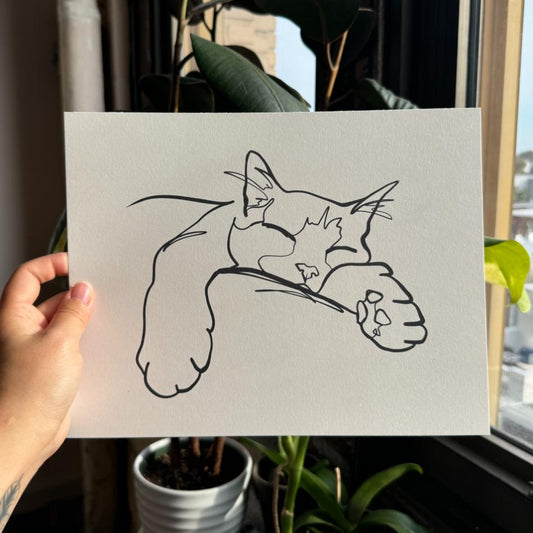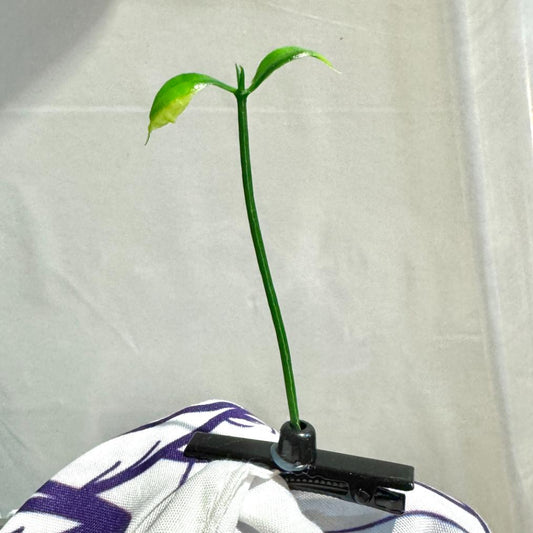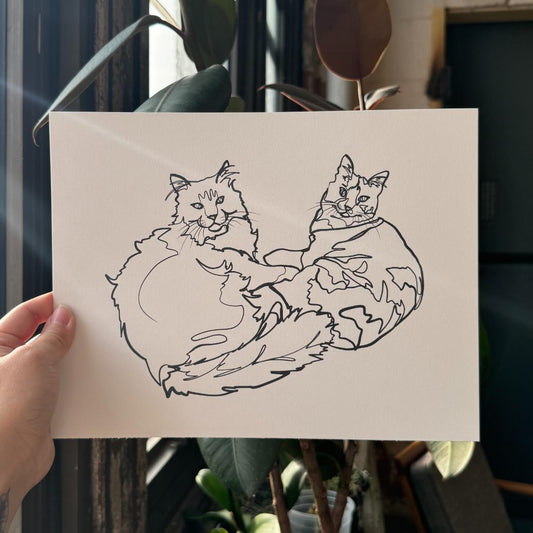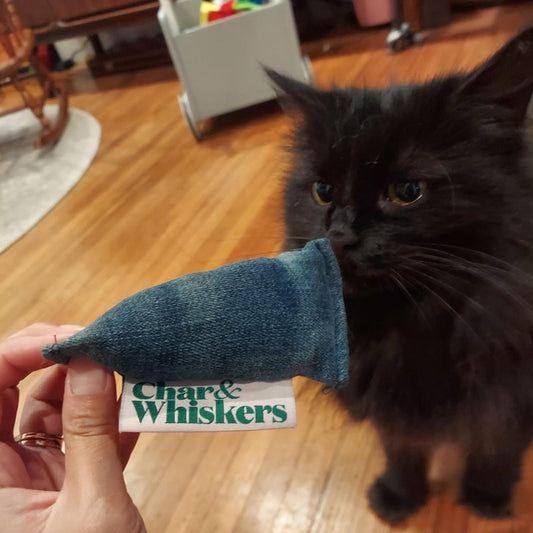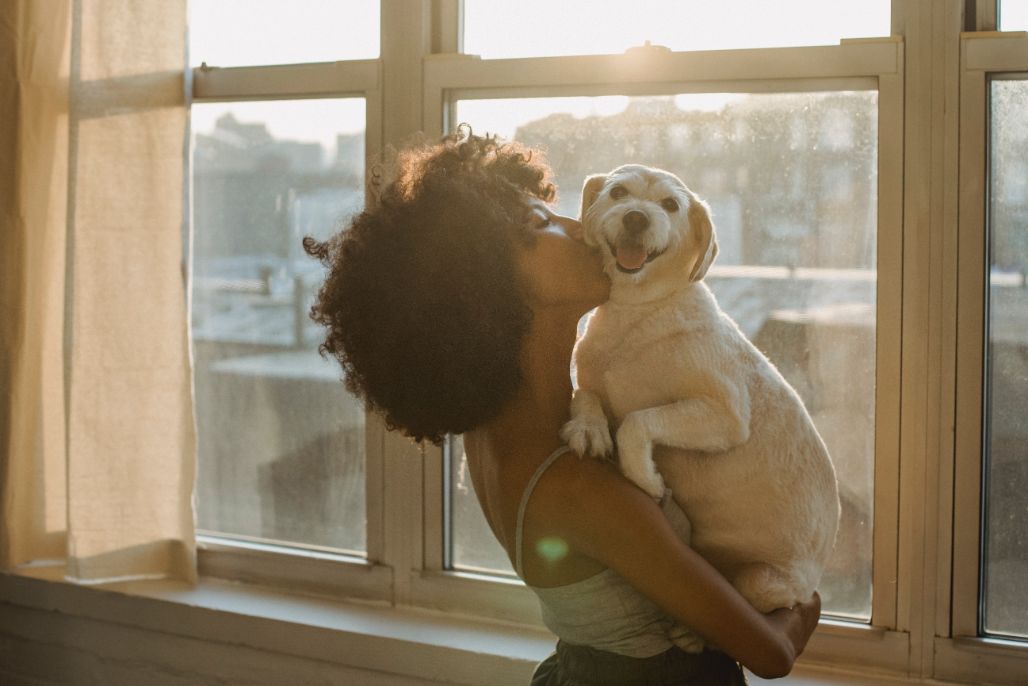
11 Quick Ways To Calm An Anxious Dog
Chris BlondellDoes your pup tear up your furniture while you’re out of the house? Do they bark excessively at minor disruptions? Do they tremble and pee on the floor while you’re heading off to work? If any of these sound familiar, you’ve got a stressed out little buddy.
Dog anxiety affects all breeds and, if left untreated, can lead to other more serious behavioral or physical issues. As you parent your best friend to be the best they can be, you’re going to need to know how to calm an anxious dog.
The best treatment is prevention and dedicated, loving training. That can take time but is a necessary investment in ensuring a happy, healthy pup. But there isn’t a one-size-fits-all for treating dog anxiety. Here are some methods that will calm an anxious dog effectively and meaningfully.
1. Take A Deep Breath
First things first, take a deep breath. Your animal takes your cues from you. If you’re stressed, they’re stressed. If you’re chill, they’re chill. When your pup starts to have an anxiety episode, be calm. It will be much, much easier for you to help your dog return to a relaxed state if you maintain a relaxed vibe.
2. Take a Walk and Burn Some Energy
An effective way to reduce anxiety in your buddy is to go for a walk. Go for a run, even. It’s difficult to be anxious when you’re too tired to bother. Exercise releases endorphins, which make us literally feel good. Go for a long walk or a run, play fetch or tug-o-war with their favorite toy. Anything you can do that’s active will help ease your pup’s anxiety.
3. Give ‘Em Some Love
Not to be a total cliche and quote The Beatles, HOWEVER, sometimes all you need is love. A loving scritchy scratch, a shoulder or chest rub, even a simple hug can make a big difference in settling down your dog. Physical affection releases oxytocin, “the love hormone,” which makes it particularly effective in reducing anxiety.
Take note, physical attention to a dog’s muzzle, top of head, or belly may exacerbate their anxiety. Stick to shoulder, chest, or the base of the tail in an anxious situation.
4. Maybe They Need Some Space
Crate training is an extremely effective method of reducing your pup’s stress. Many dog parents swear by it. Others view a crate akin to a cage at the pound. The truth is that it’s a safe, effective means of training a very good dog.
The key is to train them to like their crate - that it is not a punishment but their safe space. A great way to ensure that is to make it comfortable for them. Keep a comfy, fluffy blanket and a toy or two inside. The more time inside their crate where they can have a positive association, the more they will learn that it is their space to feel comfortable and safe.
5. Try a New Wardrobe
Not just fashionable, but functional. Calming vests and sweaters apply mild, constant pressure to a dog’s torso - like a swaddling cloth for a baby. This simple change of outfit can make a noticeable difference in your pup’s anxiety.
There are other options such as calming collars or hoods that cover the ears and/or eyes. There are several brands and options for you to choose from. Just make sure it’s in season or your pup is going to look so last year.
6. Who Wants A Calming Treat?
Many dog parents have reported success with CBD treats or supplements containing melatonin, thiamin, chamomile, L-Thianine, or L-tryptophan. Throw in some ginger while you’re at it - why not? These are natural ingredients that organically relax. There is currently no scientific data in regards to CBD’s affect on canines. Whatever the case, always discuss with your vet before you decide to treat your buddy with supplements.
7. Play That Soothing Music
Dogs like music too. Don’t dismiss its power. Just like people, music can have a strong effect on mood. Play some chill music for your pup, it may work wonders. Research shows that dogs prefer genres such as reggae and classical music (how spiritual and sophisticated) and harp music in particular as a natural sedative of sorts.
Seems mildly insulting to harpists but if you can’t help but fall asleep to the soothing sounds of a harp who’s really to blame?
8. Or, Perhaps A White Noise Machine?
Many, many dog parents leave the television or a podcast playlist on while out of the house. Hell, even some humans need to play a boring NPR interview about old hippie knitting circles in order to fall asleep. White noise is a wonderfully simple way to induce relaxation.
You can leave your television on or you can buy a white noise machine. Maybe your pup likes to hear the soothing sounds of an ocean at night, a dense rainforest, or that French ASMR guy everyone seems to like. See what your dog reacts to and go from there.
9. Let Their Nose Do Some Work
Dogs have 300 million olfactory receptors in their noses (compared to 6 million in humans) - smell is how they see the world. If a scent diffuser can work as a relaxer for humans it will certainly work wonders for your pup. Think of it as aromatherapy for dogs.
Is your furry friend a lavender fan? How about eucalyptus? Perhaps they would enjoy a warm pumpkin spice or peppermint scent to be seasonal. Over time, they will associate the smells with relaxed behavior.
10. Everyone Loves A Puzzle
Don’t rule out a puzzle toy. Like exercise and play, a fun puzzle toy can redirect your dog’s attention from stress and anxiety onto productive mental stimulation. There is a wide variety of options for you to pick from. There’s the classic Kong, lick mats, treat balls, treat dispensing puzzles, even one called “Hide-A-Squirrel.” Try a few out and see what your dog gravitates to the most.
11. Prevention and Mitigation Therapy
The best treatment for anxiety is prevention. Regardless of all those other options, you will need to train your dog in a way that allows them to manage their own anxiety. Training takes time and a lot of love. The more love you can show as you train them, the stronger effect it will have long-term. This is a lengthy, rewarding process with a lot of trial and error. But the end result is a very happy, very healthy pup who gives as much love as they get.
Anxiety in animals is inevitable and can affect dogs in ways we don’t necessarily fully understand (we barely understand it amongst our fellow humans). Be patient, be consistent, stick to a routine, and, most of all, be as loving as you possibly can be.

